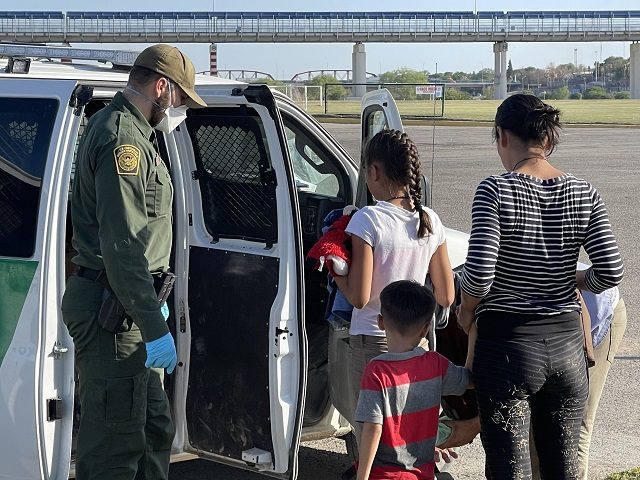U.S. Department of Health and Human Services (HHS) officials increased the numbers of unaccompanied alien children (UAC) being released into the interior of the United States since May 1. The speed at which HHS officials transferred recently apprehended unaccompanied minor children helped the agency finally release more on average than are apprehended on any single day. According to an HHS report, the Biden administration released 10,700 unaccompanied migrant children into the U.S. this month.
The number of UACs in federal custody dropped from a high of nearly 23,000 on May 1 to 18,481 on Thursday. Department of Homeland Security (DHS) Secretary Alejandro Mayorkas deployed a volunteer workforce from multiple federal agencies to assist HHS in their effort to quickly process, transfer, and ultimately release the UACs into the United States once sponsors are located.
In a statement to Congress earlier this month, Mayorkas commented on the efforts leading to the speedy releases.
“The Federal Protective Service alongside other DHS federal law enforcement partners has helped provide security support to HHS facilities housing unaccompanied children,” the secretary said. “ICE has increased its transportation capacity to transfer these children to ORR. The DHS Volunteer Force has deployed more than 400 additional staff to provide onsite support at HHS facilities across the country.”
The flow of unaccompanied migrant children is still in full swing. Nearly 7,000 UACs were arrested and placed in Border Patrol custody as the releases took place. The arrests mean the number of children released to sponsors, although increasing in pace, only result in marginal reductions to the total number of UACs detained.
Health and Human Services opened more than a dozen Emergency Intake Sites to deal with the influx of migrant children. These facilities make use of abandoned oilfield man camps, vacant buildings, and convention centers across the United States.
According to Mayorkas, “Between March 13 and May 1, FEMA assisted in the activation of fourteen HHS EIS facilities. EIS facilities are operating in Texas, California, and Michigan, increasing the potential temporary bed capacity when fully staffed by 19,987 beds, or 1,999 percent.”
These unlicensed facilities faced criticism due to insufficient staffing, drinking water issues, and Covid 19 protections.
In March, Texas Governor Greg Abbott (R) sharply criticized the Biden administration over conditions at multiple HHS detention facilities for unaccompanied migrant children. Abbott specifically cited a drinking-water issue at a facility hastily opened by HHS in Midland, Texas, and a COVID-19 outbreak in a facility opened in Carrizo Springs, Texas.
Governor Abbott said, “The Biden Administration has been an abject failure when it comes to ensuring the safety of unaccompanied minors who cross our border. The conditions unaccompanied minors face in these federally run facilities is unacceptable and inhumane.”
HHS estimates the cost to detain a child in the newest facilities, which they refer to as Emergency Intake Sites, is $775 per day. In other long-term facilities, they indicate that cost to be approximately $275 per day. Based on their estimates, even at the reduced number of UACs currently in custody, the cost to the American taxpayer stands at nearly $7 million per day.
Randy Clark is a 32-year veteran of the United States Border Patrol. Prior to his retirement, he served as the Division Chief for Law Enforcement Operations, directing operations for nine Border Patrol Stations within the Del Rio, Texas, Sector. Follow him on Twitter @RandyClarkBBTX.

COMMENTS
Please let us know if you're having issues with commenting.